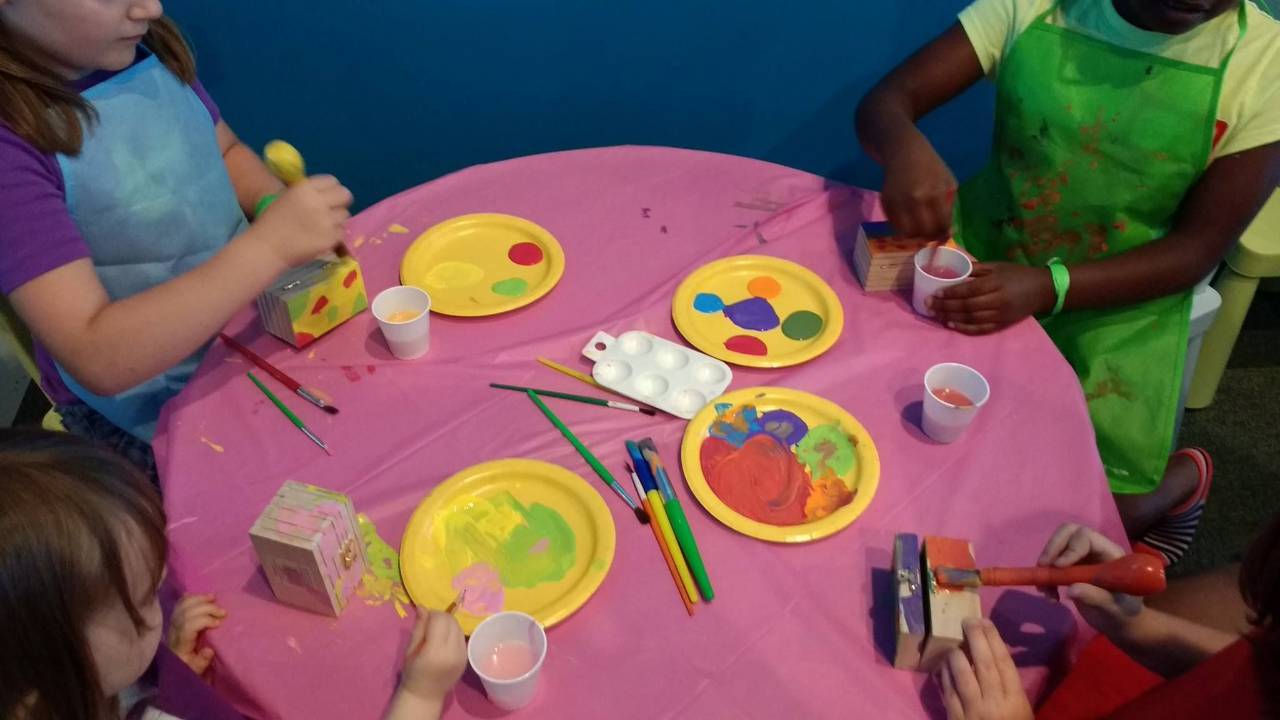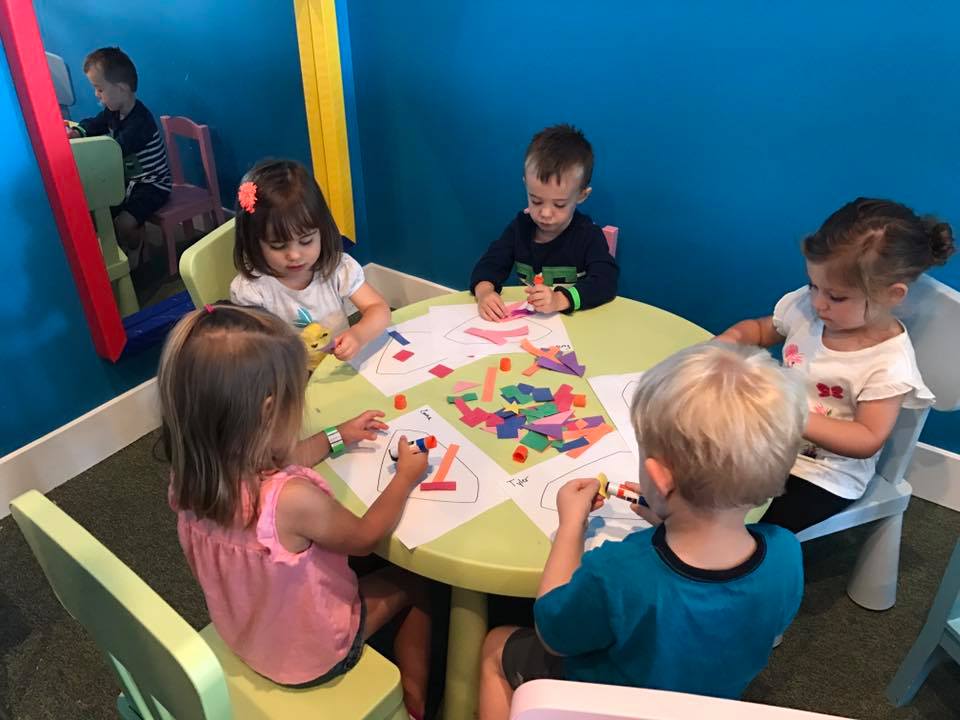Designing And Operating A Summer Camp Program At Your Play Cafe Or Indoor Playground Business

Summer camps are a great way to provide children with a fun and enriching experience while also adding to your bottom line as an indoor playground or play cafe owner. This added revenue can reduce the seasonality of your business and therefore provide you with a more consistent and predictable income year-round.
However, running a summer camp is no easy task.
To ensure the success of your camp, it is important to be organized, efficient, and lean into the strengths of your space as well as your staff. I went into great detail about how to successfully plan and promote summer camps here– but in this episode, I am just going to share a few quick tips that I have learned along the way in my 5 seasons of hosting summer camp.
I am not going to do as deep of a dive since your camps will likely be just as unique as your indoor playground business is– and that’s a beautiful thing.
One of the things I emphasized most in the last episode is how much of your marketing materials and your website copy should actually be dedicated to talking about YOUR unique differentiators that allow you to stand out against your summer camp program competition.
And your camp itinerary and execution style should be no different.
For example, Play Maker Society member Alera, owner of Project Play in Texas has a beautiful fenced-in outdoor component to her play cafe, allowing her to add activities and features to her camps that my business, an exclusively indoor playground– just wasn’t able to do.
So here are 6 quick tips I have about executing camps in a way that brings your staff, customers, and campers joy– leading to positive word of mouth, glowing reviews, referrals, and repeat customers.
1) Have A Plan Before You Promote:
Before the summer camp begins, it is important to have a clear plan and timeline.
Our camps were 3 hours long in the afternoons. We found that when kids arrived, the first thing they wanted to do was PLAY, so we leaned into this and embraced it. We allowed them to freely play for around 30-45 minutes before calling them to their first activity.
After about 15 minutes (bathroom breaks, hand washing, etc), we started what we called our “cornerstone” activity of the day– or the MAIN activity that was promoted most in our marketing materials for that day of camp. You know, the project or craft the children would run up and show their parent at pick up. We found the campers had the most focus and patience at this time.

Next, while the children were already sitting, we handed out a snack while the camp assistant cleaned up the activity and made sure all were labeled for an easy pick-up.
This was followed by more bathroom breaks, hand-washing– that sort of thing.

Since the children had been sitting for about an hour at this point, we then engaged in free play for another 30 minutes or so. The remaining 30 minutes was taken up by what we called the “secondary” activity of the day. This was maybe a story time or a dance party, depending on the theme of the camp that day.
Having the children all in one space and contained when the parents came in was extremely helpful for pick-up and made everything less chaotic when the parents entered which they appreciated. Parents would then come to the play area gate/ classroom (depending on which of our play cafe business locations the camp was at) and sign out their children one-by-one.
This was the itinerary which worked best for us–after MANY tweaks and improvements based on experience. You will find your own groove– the key is to pay attention to what works and what doesn’t and stay agile in your planning.
We included a LOT of free play since many of the attending children were on the younger side of school-age, and did not have TOO long of attention spans for many structured activities. After all, play is the true job of a child!
To summarize this itinerary, it would be:
1:00pm Drop Off
1:00-1:45 pm Open Play
1:45-2:30 pm Primary Activity Set-Up and Activity
2:30-2:45 pm Snack
2:45-3:30 pm Snack Clean Up, Bathroom Breaks, and Open Play
3:30-4:00 pm Secondary Activity
4:00 pm Pick Up

Once you have your itinerary, make sure to identify all the tasks that need to be completed and assign them to staff members. If you are hiring 1099 contractors for your summer camps like I suggested in episode 158 of the Profitable Play Podcast– it may be wise to have your normal on-payroll staff members complete as many tasks prior to the camp as possible to save their hours and energy.
2) Set Clear Expectations and Over Communicate
Make sure to communicate expectations to parents, staff, and campers. This will help everyone understand the rules and regulations of the camp, as well as their individual roles. I have found that parents, especially those with younger children, appreciate knowing exactly what their child will be doing, approximately how long they will be doing it for, and in what order.
While your itinerary may change based on the adjustments you need to make to improve your camp experience, I want to urge you to communicate anything major to the parents.
There is no such thing as TOO much information or TOO MUCH communication when parents are leaving their children in your care.
Be sure to send (and re-send) parents (via email so you have a written record) all of the frequently asked questions regarding camps, what forms parents need to fill out or bring, a list of what to send with their children, a copy of rules and regulations (as well as safety procedures), etc.-- as well as contact information for whoever is in charge of camp should there be an emergency or change in pick-up or drop-off plans.
3) Keep A Clear Record of Costs and Revenues
It is essential to keep track of all the supplies needed for the camp, such as food and equipment. Make sure to stock up on these items in advance to avoid any last minute trips to the store.
I also recommend, especially in your first few seasons of running camps, to carefully track costs– including ones that pop up in the moment (like if you accidentally under order supplies and need to grab more the day-of).
This will help you evaluate your program’s success at the end of this season and make any necessary changes to improve profitability and efficiency for the next year. It can also help you decide if your price was adequate relative to your costs.
In this video, I share exactly how I teach my students to calculate prices based on profit margin to ensure a profitable and sustainable indoor playground or play cafe business. If you don’t have your true numbers in terms of cost and revenue, though, these calculations will be futile.
4) Have An Emergency Plan
It is important to have an emergency plan in place in case of any unexpected events. Make sure to provide staff and campers with the necessary information in case of an emergency– as well as communicate these procedures to parents which I alluded to earlier.
If you are wondering what types of things you may want to consider prepping in advance, check out this podcast episode here about preparing your indoor playground business for an emergency.
5) Keep in Close Contact With Teachers And Staff And Ask For Feedback
Keep track of the progress of the camp by having regular meetings with staff members. This will help you stay up to date and make any necessary changes to ensure the success of the camp.
While you don’t necessarily need to review numbers with them, I would recommend asking them for feedback on the activities and itinerary and ask for suggestions when necessary.
Doing this helped us ensure our staff and camp leaders were feeling heard and appreciated, and ensured they were working in what they considered an enjoyable work environment they actively were encouraged to contribute to.
This led to high retention rates between summer camp seasons which reduced our need to recruit, hire, and train new leaders every year which can be an extremely cumbersome process.
6) Ask For Parent Feedback and Reviews
After each camp session, be sure to send an email survey or a google form asking for feedback. While parents are not necessarily comfortable sharing honest feedback to the teacher or owner’s face, they will likely be more open in an online format.
While negative or constructive feedback may be difficult to read, it’s much better for your business to collect this information privately on a survey or google form than in a public online review others can read.
If someone DID have negative feedback, be sure to email a reply and mention if you were able to implement changes based on their experience. This will reduce the likelihood that the camp family will be lost as customers and will also reduce the likelihood of them spreading negative feedback amongst their friends and circles (and on social media).
If someone leaves POSITIVE feedback, it’s a great idea to gently ask for a review or testimonial. If you need some inspiration or suggestions of how to capitalize on these reviews as marketing assets and increase camp bookings, you can listen to the Profitable Play Podcast episode 85 .
By following these tips, you can ensure that your summer camp is run efficiently and effectively. With proper planning and organization, you can provide campers with an enjoyable and safe experience– and you can leave parents thrilled that they entrusted you with their children’s care.
And if you’d like to join Play Cafe Academy and unlock a free MONTH inside my group coaching and resource membership Play Maker Society, just click here or below! We would love to help you create a profitable and enjoyable summer camp program for your indoor playground or play cafe business!




